Imagine you are working on an important project and the computer suddenly crashes with a BSOD (Blue Screen of Death) error. You not just lose the data but the effort and hard work you put in goes in vain. One of the most common BSOD errors is the ‘Clock Watchdog Timeout’ error.
One of the first things that you should know is why is it called ‘Blue Screen of Death’? It’s because when the system crashes, the screen turns blue, and the error message is displayed on the screen. We have already discussed a lot of BSOD errors in various articles that are available on our website.
In this article, we will discuss the ‘Clock Watchdog Timeout’ error and the various fixes to get things up and running.
Related: FIX: Igdumdim64.dll Error in Windows 10
What is Clock Watchdog Timeout Error?
It’s a system hardware error that arises when there is an issue with communication between the system and processor. To help you understand the error layman’s terms, when you give a command to your system, the OS asks the CPU to fulfill it, which in turn forwards the same to the processor. This process of the CPU asking the processor to do what you just requested is called ‘System Interrupt’. In most cases, this goes on smoothly and your command is processed, however, if the process takes too long, a ‘Clock Watchdog Timeout’ error may happen.
It’s generally caused by faulty hardware or connections, outdated drivers, running an older version of Windows, malware or virus, and an overclocked CPU. Most of the fixes are fairly simple and do not require expertise in the subject.
Listed below are some of the most effective fixes. However, you don’t have to try all these out, just progress down the list and until one works for you.
1. Restart Your System
When trying to fix the ‘Clock Watchdog Timeout’ error, your first approach should be to restart your computer. If there is no major fault and a simple bug caused the error, restarting your system might fix it.
Once your system restarts, check if the issue is resolved, if not, move to the next fix.
2. Disconnect any New Hardware
If you have connected any new hardware to your system after which you started encountering the error, remove that device. Any improperly installed or configured hardware can lead to the ‘Clock Watchdog Timeout’ error.
For some users, it isn’t easy to identify the hardware leading to the error, therefore, disconnect all devices except for the mouse and keyboard. Now restart your computer and see if the error is fixed. If it’s fixed, one of the devices was responsible for it.
Now start reconnecting them one at a time to identify the improperly installed hardware and then fix it.
3. Check your Hardware for Loose Connections and Faults
A loose cable, improperly attached drives or other hardware faults could lead to the ‘Clock Watchdog Timeout’ error. To fix this, just open your CPU and look for these issues. If you are not comfortable opening the device by yourself, get it done by a trained professional.
Also, now that your system has been opened up, clean it thoroughly. Dust can affect the performance of your hardware and if the buildup is not cleaned at regular intervals, it can lead to errors.
3. Uninstall Recent Software
Many a time, the software that you recently installed may lead to this error. Once you identify the software, uninstall it and then reboot your system to fix the error.
To uninstall an app, press WINDOWS + I to open system ‘Settings’ and then select the ‘Apps’ section from the list on the screen.

You will now find all the apps on your system listed on the screen. Click on the app that you want to uninstall and select the ‘Uninstall’ option that appears.
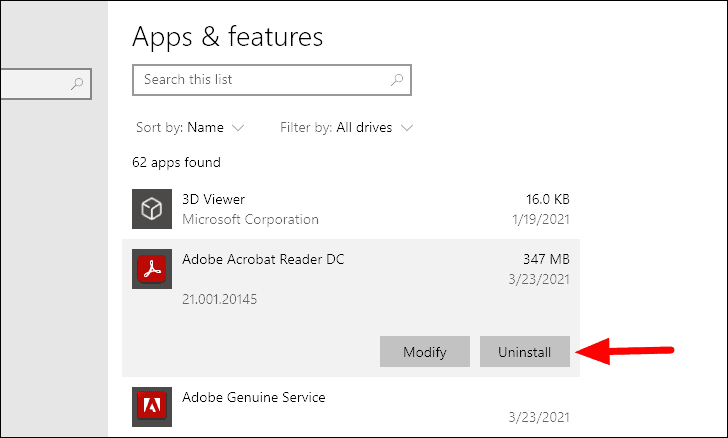
When you click on uninstall, a small box appears where you have to confirm the uninstallation of the app by clicking on the ‘Uninstall’ icon in the box.

Once the app is uninstalled, reboot your system and check if the issue is fixed. If it’s still not resolved, try the next fix.
4. Update Windows
If there’s a bug that’s causing the error, there’s a good chance that Windows will come with a solution for it in the next update. Therefore, whenever you encounter any BSOD error, always look for available updates.
To check for updates, press WINDOWS + I to open system ‘Settings’ and then click on ‘Updates & Security’, the last option in the list.
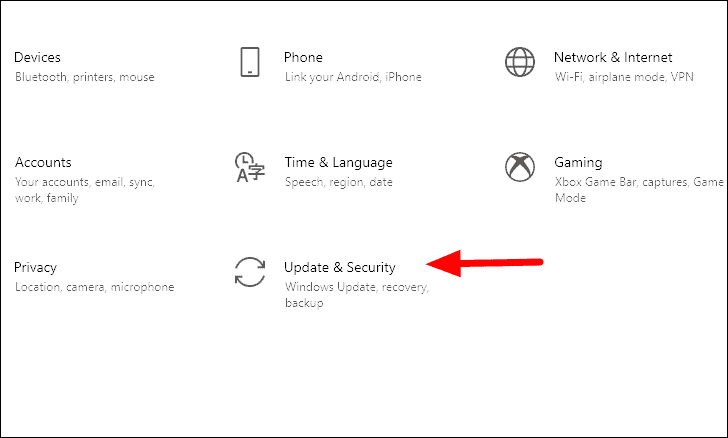
Next, click on the ‘Check for updates’ icon under ‘Windows Update’ to check if there are any available updates. After you click on it, Windows will look up for available updates and then download and install them to your PC. Also, if you see any pending optional quality updates, do download and install them as well.
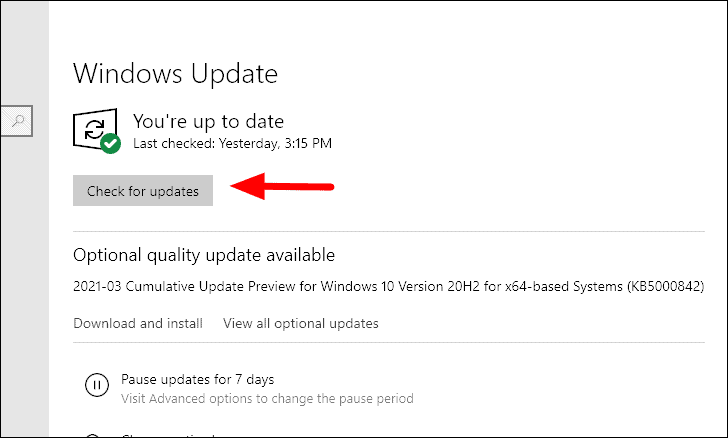
Once the Windows are up to date, the issue must be resolved. In case it’s not, there’s no need to worry. We have mentioned some other fixes that will definitely help fix the ‘Clock Watchdog Timeout’ error.
5. Update Drivers
Generally, Windows 10 automatically looks up for driver updates and keeps them up to date. But in some cases, it might happen that a driver update is available and has been missed by the Windows. Therefore, you should manually update the drivers, since the previous fixes have not worked for you, and it could be the outdated or corrupt drivers responsible for the error.
To update the drivers, search for ‘Device Manager’ in the Start Menu and then open it.
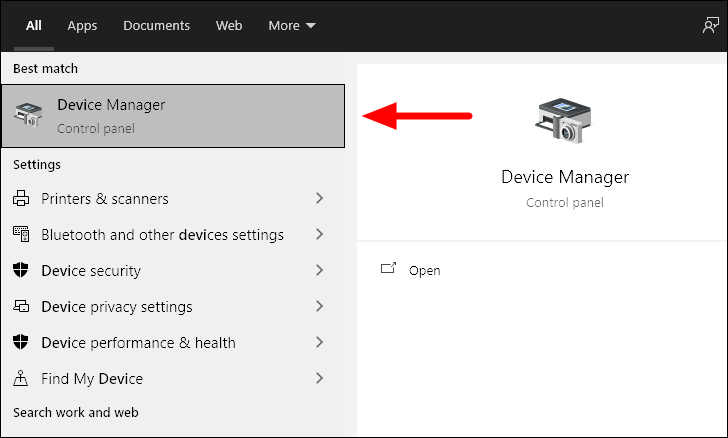
You will now see the list of hardware connected to your system. Look for any yellow marks alongside an option in the list as it indicates that the device is not configured properly or there is an issue with the driver. If you don’t find one, it’s likely that all the devices are properly installed and the driver’s up-to-date.
However, to be on the safe side, just click on the arrow before an option and then right-click on the device that appears. Next, right-click on it and select ‘Update driver’ from the menu.
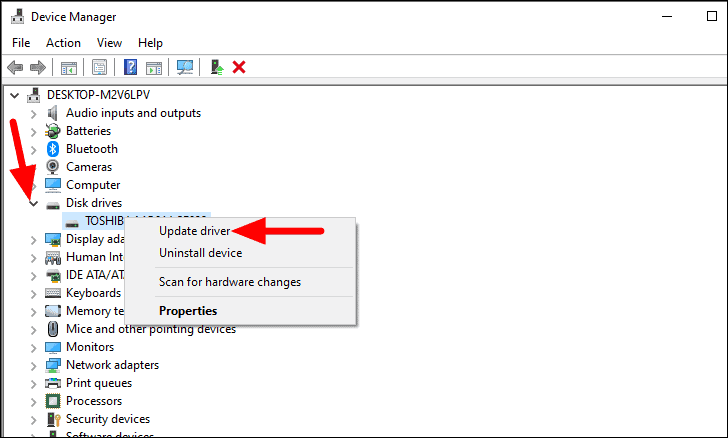
A new ‘Update Drivers’ window will open up where you have the option to either let Windows search for the best available drivers or you can manually install a driver that’s already been downloaded on the system. It’s recommended that you select the first option and allow Windows to look for drivers.
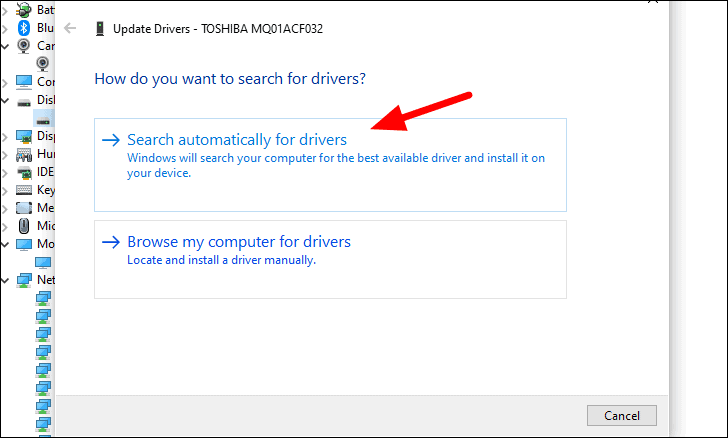
If there’s an update available for the driver, Windows will install it. Similarly, check for updates for other drivers as well.
6. Running Windows Memory Diagnostic Tool
In case the error is caused by a memory issue, running the Memory Diagnostic Tool may fix the error. This tool is built into your Windows 10 system and you can easily run it.
To run Windows Memory Diagnostic Tool, press WINDOWS + R to open the run command, enter ‘mdsched.exe’ in the textbox and then either press ENTER or click on ‘OK’ at the bottom.
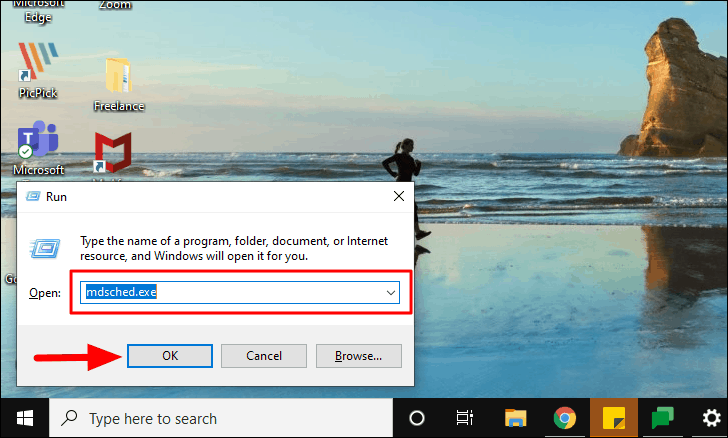
You now have the option to either run the tool by restarting your computer right away or reschedule it until the next time. It’s recommended that you chose the first option and run the tool right away to fix the error. Before you run it, ensure that you have saved your work, since the computer will restart and you might lose unsaved data.
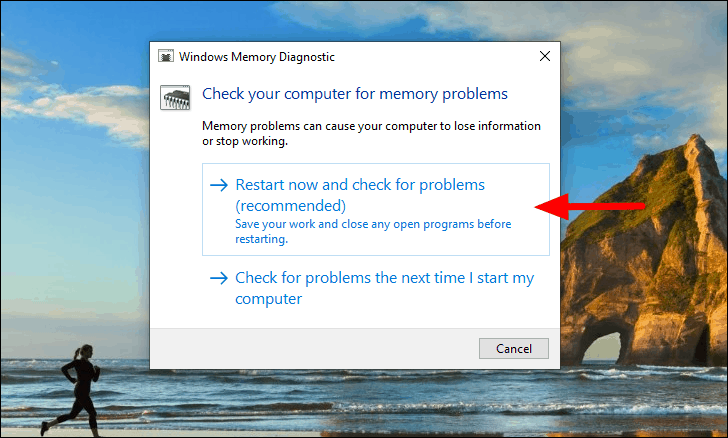
The scan may take up to half an hour to complete based on system configuration and storage. Once it is complete, restart your computer and see if the error is fixed. In case, the ‘Clock Watchdog Timeout’ error persists, move to the next fix.
7. Run SFC and Check Disk Command
SFC (System File Check) and CHKDSK (Check Disk) are two commands that can fix most of the problems with your system. Therefore, you should run both these commands and sit back and relax while your system is getting fixed.
SFC only scans the files in which the Windows is stored while CHKDSK scans the complete drive, therefore, it is obvious that CHKDSK will comparatively more time. So, we will start with SFC and if the issue is not fixed, go ahead with CHKDSK.
Running SFC Command
To open the Command Prompt, search for it in the Start Menu, right-click on the option and then select ‘Run as Administrator’ from the menu to open the command prompt.

Before we run an SFC scan, it’s recommended to run the Deployment Image Servicing and Management(DISM) tool. Running the DISM beforehand ensures that the corrupt file in the Windows system image is fixed for SFC to be effective.
To run DISM, enter the following in command prompt and press ENTER.
DISM /online /cleanup-image /restorehealthThe scan will start and will take a couple of minutes to complete. Once it is finished, we can run the SFC scan.
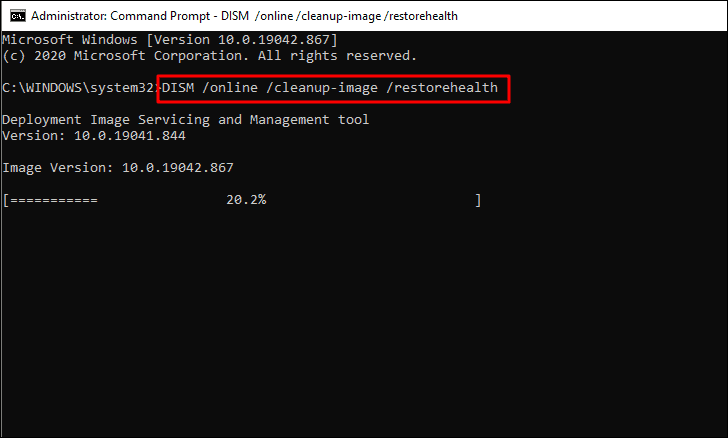
Next, enter the following in Command Prompt and then press ENTER.
sfc /scannow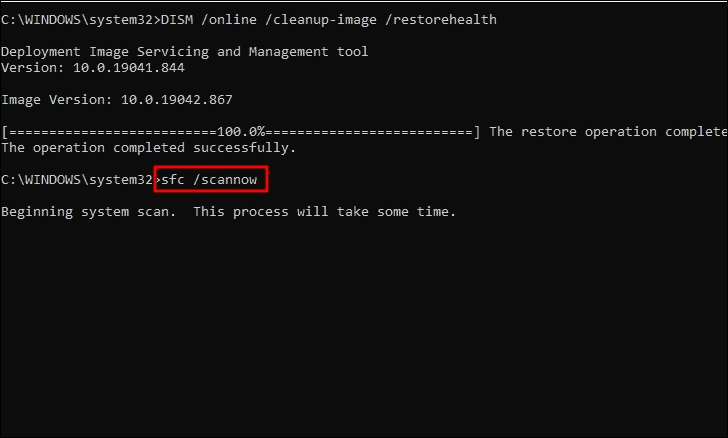
The scan will take some time to complete and fix any issues that are found along the way. After the scan is finished, reboot your computer and see if the issue is resolved. In case it is not, run the CHKDSK command as discussed below.
Running CHKDSK
CHKDSK is a comprehensive scan and will take longer than SFC to finish. Also, there is a good chance that the error will be fixed after the scan is done.
To run the CHKDSK scan, paste the following command in Command Prompt and then press ENTER.
chkdsk /rOnce you have entered the command, you will be asked to reschedule the check until the next restart. Type ‘Y’ and then press ENTER to confirm.
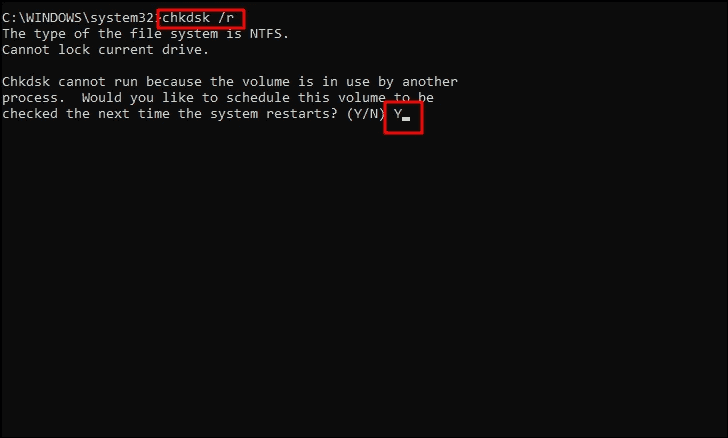
You can now restart your computer and let the Check Disk utility find issues and fix them all.
8. Roll Back Overclock Settings
Overclocking can be one of the reasons behind the ‘Clock Watchdog Timeout’ error. Some users overclock their hardware to run it at a speed higher than what is designed for. If none of the above fixes have worked for you and you have overclocked your hardware, it’s time to roll back to the default settings.
Since overclocking system differs for different hardware, no specific instructions could be given in that regard. However, if you are one of those, you must know how to roll back using the various application or system settings.
We have discussed nine of the most effective fixes for the ‘Clock Watchdog Timeout’ error, and one of them must have fixed it in your system. In case you are still encountering it, get your computer checked by a professional for other hardware issues that cannot be fixed at home. Anyway, after reading this article, you have gained a better understanding of the error and what causes it, so you wouldn’t be clueless while dealing with the technician when you take your system for repair.










Member discussion